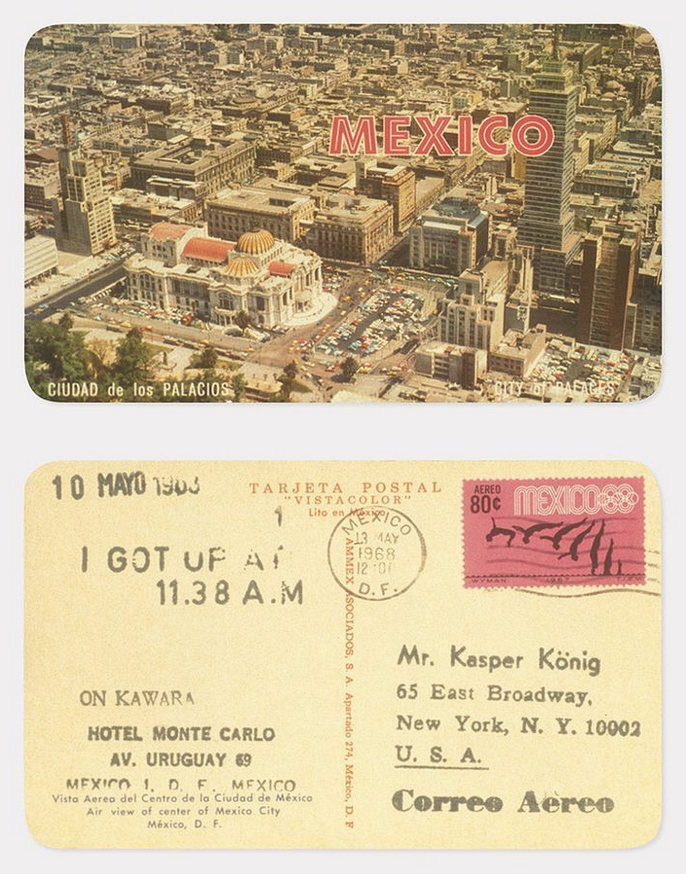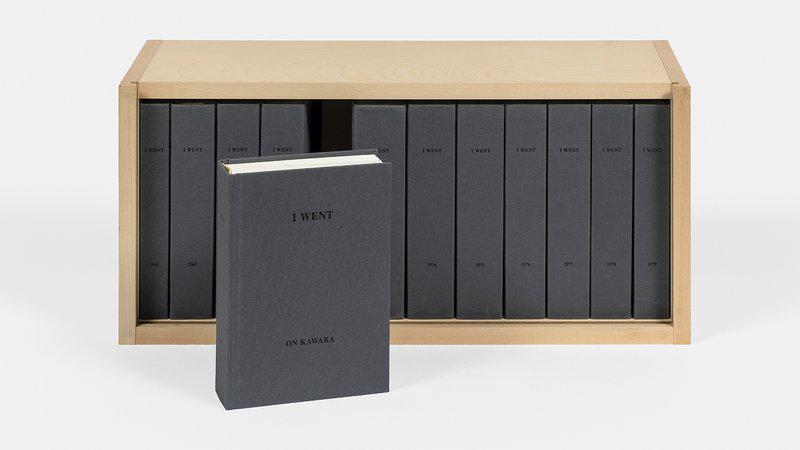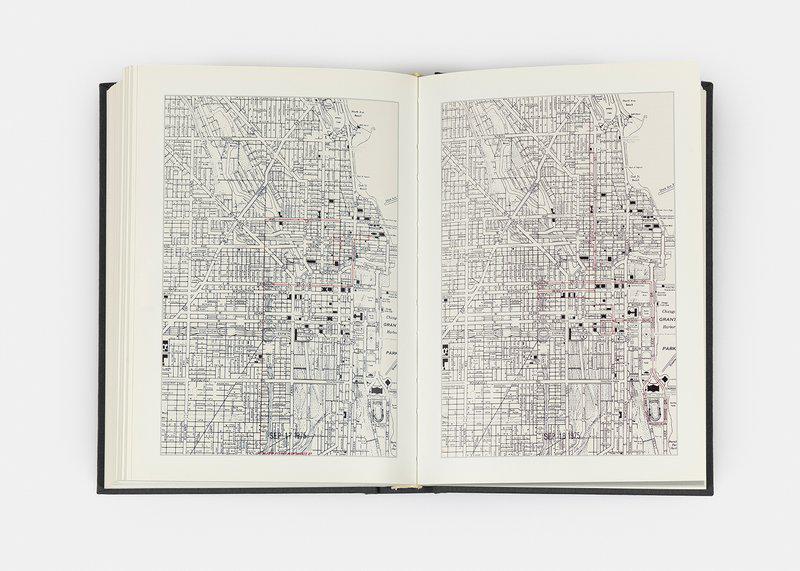On Kawara (Japanese, 1933–2014)
Photomechanical prints, 8.3 x 14.0 cm (3 1/4 x 5 1/2 in. ) each
Credit Line: Purchase, The Horace W. Goldsmith Foundation Gift, through Joyce and Robert Menschel, 2001
“In the I Got Up series, Kawara sent two postcards every day to friends, family, collectors, colleagues. The postcards that Kawara chose were always horizontal in format, and always of the touristic variety. He played games with the cards, sometimes sending a single recipient multiple[s] of the same image, or taking recipients on tours around the cities.
Narrator: Here on Rotunda Level 3, you will see three bodies of work organized by On Kawara to be viewed as a single section of the exhibition that he titled Self-Observation. These works all represent a record of ordinary activities—the kinds of things we all do, each day. Every day for 12 years beginning in 1968, Kawara sent postcards for the series I Got Up, recorded lists of names for I Met, and traced his movements on maps in I Went.
Presented here are over 1,500 of the more than 8,000 postcards comprising I Got Up. Kawara used various kinds of stamping tools to date and address the cards, including a return address, which provides another way to plot his whereabouts. Along with this information he stamped the phrase I GOT UP AT followed by the precise time he arose from bed. Assistant curator Anne Wheeler:
Anne Wheeler: In the I Got Up series, Kawara sent two postcards every day to friends, family, collectors, colleagues. The postcards that Kawara chose were always horizontal in format, and always of the touristic variety. He played games with the cards, sometimes sending a single recipient multiple of the same image, or taking recipients on tours around the cities.
Narrator: Curator Jeffrey Weiss:
Jeffrey Weiss: He’s taking advantage of mediums that already exist in the world. What he’s doing is supposed to reflect the parameters of daily life that are decidedly nonaesthetic. Kawara’s work seems to be the residue, in a way, of a practice of these activities. It takes the form of the repetition of modular elements, or units, that are roughly but not quite the same from one to the next.” [credit]
—
“Considered the most personal and intimate of his works, I GOT UP is part of a continuous piece produced by On Kawara between 1968 and 1979 in which each day the artist sent two different friends or colleagues a picture postcard, each stamped with the exact time he arose that day and the addresses of both sender and recipient. The length of each correspondence ranged from a single card to hundreds sent consecutively over a period of months; the gesture’s repetitive nature is counterbalanced by the artist’s peripatetic global wanderings and exceedingly irregular hours (in 1973 alone he sent postcards from twenty-eight cities). Moreover, Kawara’s postcards do not record his waking up but his “getting up,” with its ambiguous conflation of carnal and existential (as opposed to not getting up) implications.
Contrasted with the random temporal shifts conveyed in the text messages are the diverse images of Manhattan featured on the postcard fronts, which accumulate over the piece’s forty-seven day duration into an unexpectedly quasi-cinematic aerial tour of the city-circling around the United Nations (and inside the General Assembly), down the East River along the waterfront to New York Harbor and the Statue of Liberty, and finally roaming around Federal Plaza at street level before coming to rest at City Hall. Like the newspaper pages that line the special cases housing each date painting, these found images juxtapose the infinite variety and quotidian reality of the public world with the elliptical, self-reflexive messages on the back. The sequence also extracts a drifting urban poetry from the mass-produced and anonymous, layering it conceptually over the banal, functional postal route of the objects themselves, as well as reintroducing a formal design to a work that is at first glance anticompositional.
With tremendous economy of means and a surprising visual elegance, Kawara creates a complex meditation on time, existence, and the relationship between art and life.” [credit]


